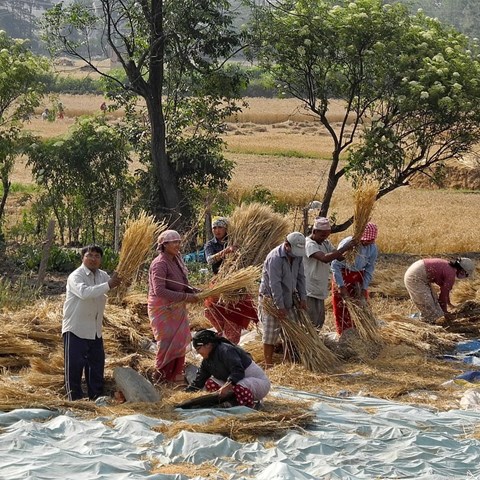This project developed the concept of self-organized adaptation to explore how democratic political systems -— comprised of multiple actors, institutions, and forms of state support -— shape local responses to climate risk and change in Himalayan Nepal and India.
Research focus
Assisting vulnerable populations confront global climate change is a defining challenge of the present era. This project developed the concept of self-organized adaptation to explore how democratic political systems— comprised of multiple actors, institutions, and forms of state support—shape local responses to climate risk and change. We asked:
What is the role of democratic politics in enabling vulnerable groups to confront climate challenges — and what characteristics of a democratic political system generate more effective and equitable state support?
Methods
We developed a mixed methods approach in India and Nepal with:
- Intensive qualitive enquiry: detailed, context rich analysis of how households engage with state actors to confront climate challenges
- High frequency survey data collection: to assess how households confront climate risk and challenges as events unfold on the ground
- Mapping of institutional networks: to capture the processes, relationships, and networks through which citizen action galvanizes different kinds of state responses.
”….We aim to move beyond the domain of structured intervention to focus on the political conditions that enable more organic, ongoing, self-organized processes of adaptation on the ground.”
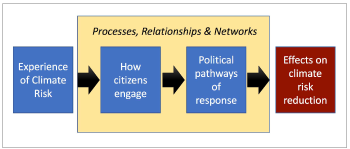
Analytical strategy
We focused our attention on four key elements of enquiry:
- Experiences of climate risk: We aim to map the multiple climate and non-climate risks that different households face
- Patterns of citizen engagement: We will study how households engage with diferent state actors, institutions, and government programs to confront climate challenges
- Political pathways of response: We will explore how different networks of political interaction unfold and, in turn, influencs state responses to climate challenges
- Effects on climate risk reduction: We will assess the recursive effects of different bundles of state support on households’ exposure to climate risk and threats.
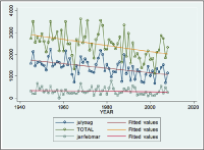
Image above: Declining precipitation trends, Palampur, India.
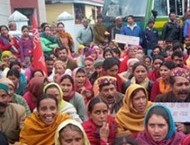
Image above: Political rally of a farmer’s group, Kangra, India.
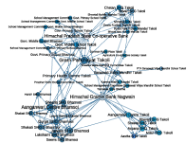
Figure above: Local institutional network from pilot study, Takoli, India.
